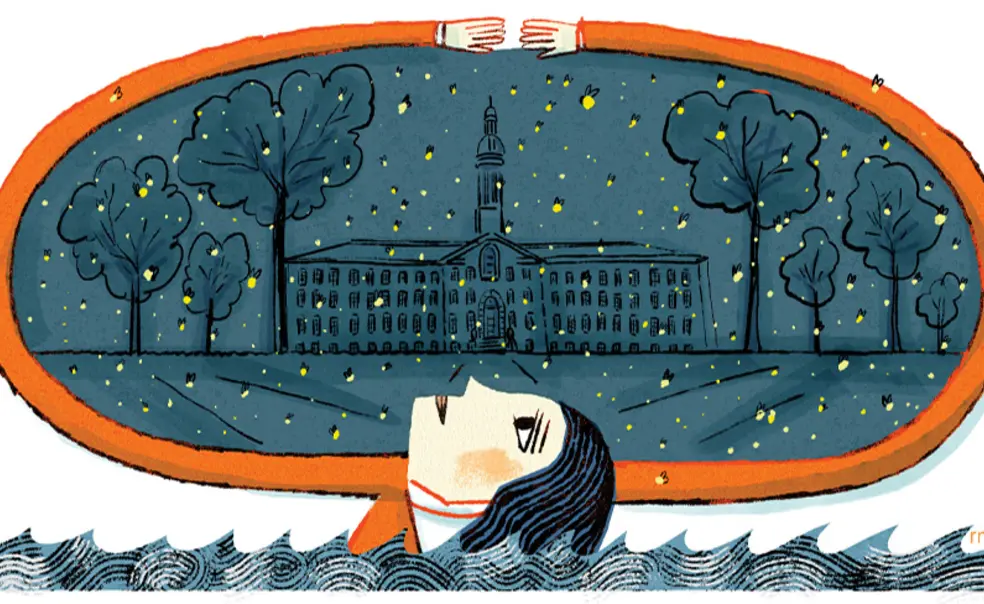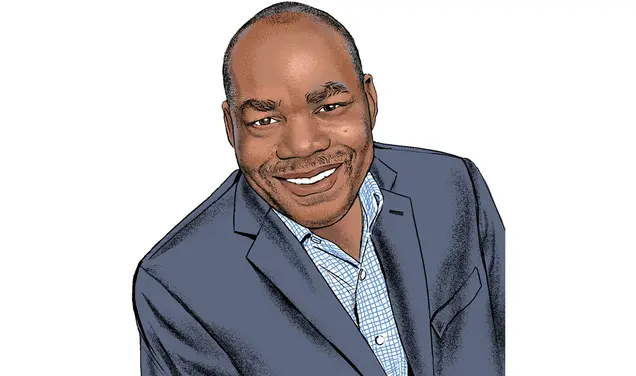From Fireflies to Flash Floods, a Student Ponders the Local Environment
Allison Jiang ’26 spent the summer working as a policy intern for The Watershed Institute in nearby Pennington, New Jersey
I had never seen so many fireflies in my life. One June evening, strolling past FitzRandolph Gate, I witnessed a sea of lime-green lights flickering across the lawn of Nassau Hall. The sight was surreal — a scene where fairytale meets college brochure.
Growing up in downtown Chicago and later Shanghai, I rarely saw fireflies. I’d tried to catch them but was always too slow. That evening though, the opportunities were endless. I reached out, cupped my hands, and felt one’s tiny legs moving against my palms.
This summer, I found myself paying more attention to my environment. I was working as a policy intern at The Watershed Institute in Pennington, New Jersey, a 20-minute drive from campus. The organization advocates for clean water and a healthy environment through education, science, and policy efforts.
While the fireflies reminded me of nature’s beauty, my work at the Watershed revealed something more urgent. The environment isn’t just something to admire. It deeply affects people’s lives.
Floods devastated communities around the country this summer, from the 27 campers and counselors who died at Camp Mystic in Texas to two women who lost their lives in Plainfield, New Jersey. At the Watershed, I’ve joined press conferences and strategy meetings with groups supporting NJ PACT REAL, a statewide rule proposal that would modernize land-use laws to address chronic flooding and sea-level rise. Despite its urgency, the rule was not only stalled but weakened amid misinformation and resistance. Developers, for example, have balked at the cost of elevating new buildings in flood-prone areas and falsely claimed the rule creates “no-build” zones.
“Environmentalism used to be about saving things before we lost them,” said Jim Waltman ’86, executive director of The Watershed Institute. “That environmentalism is still there, but now there’s also this sense of peril and danger that I don’t remember as a kid, and flooding is a huge part of that.”
As I’ve learned more about flood mitigation, my surroundings have started to look different. For the first time in my three years on campus, I noticed the green infrastructure built into the sidewalks of New College West, porous pavement and native plants designed to better absorb stormwater.
Other Princetonians at the Watershed also attested to the impact of environmental work on their daily lives. “So much of environmental work is place-based,” said Sophie Glovier ’87, chief of strategy and programs at The Watershed Institute. “Once you see the environmental aspects, you can’t unsee them. … Once you see the ditch by the side of the road, you know that’s where the stormwater is running.”
Waltman described a similar shift in perspective. “When I look at the world now, it’s a little bit bifurcated. I see the built environment and can tell if it’s an older development, and my brain starts thinking, ‘Where would I put rain gardens? This downspout should go here instead of there.’ It’s a different way of looking at things.”
That perspective echoes a question ever-present during my internship: What systems can we use to protect people from environmental harm? During Hurricane Ida in 2021, residents of affordable housing were among the 30 people killed in New Jersey. In discussions with families from Trenton, I heard how flooding regularly prevents people from getting to work.
These experiences have made environmental justice feel less abstract and more personal. Hearing these stories has pushed me to think more deeply about the forces, natural and human, that shape our neighborhoods, waterways, and lives.
That night in front of Nassau Hall, I held the firefly for a moment before letting it go. Later, I learned that this year’s surge in fireflies was linked to especially warm and wet spring conditions, ideal for firefly larvae to thrive.
As it rejoined the crowd, the firefly became a glowing reminder of those very forces — that the changing climate that nurtures fireflies can also fuel deadly storms. These past months have made it clear to me that environmentalism isn’t just about wildlife, it’s also about people and the choices we make to protect our future communities.












No responses yet